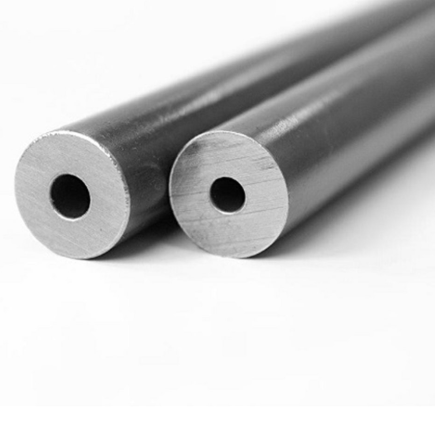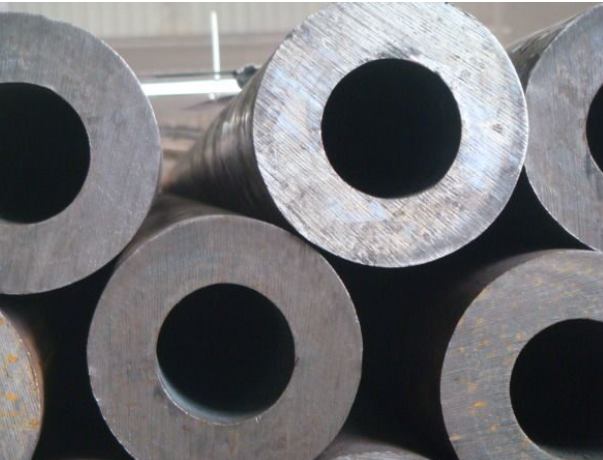Carbon steel pipes are a cornerstone of modern industrial infrastructure, serving critical roles in sectors ranging from oil and gas to construction and manufacturing. One of the most important factors influencing their performance and application is their size. In this comprehensive guide, we’ll explore the common dimensions of carbon steel pipes, industry standards, and how to choose the right size for your project.

1. Introduction to Carbon Steel Pipes
Carbon steel pipes are valued for their durability, strength, and cost-effectiveness. Their versatility makes them suitable for high-pressure systems, structural frameworks, and fluid transport. However, selecting the correct pipe size is essential to ensure safety, efficiency, and compliance with project requirements.
2. Key Dimensions of Carbon Steel Pipes
The size of a carbon steel pipe is defined by three primary parameters: outer diameter (OD), wall thickness (WT), and length. Let’s break down each component:
A. Outer Diameter (OD)
The outer diameter is the most visible dimension of a pipe. It is measured across the pipe’s cross-section, including the wall thickness. Common OD sizes for carbon steel pipes include:
- Small-Diameter Pipes: ½ inch (15 mm) to 2 inches (50 mm)
- Used for residential plumbing, HVAC systems, and light industrial applications.
- Medium-Diameter Pipes: 2.5 inches (65 mm) to 12 inches (300 mm)
- Ideal for water supply networks, oil refineries, and chemical plants.
- Large-Diameter Pipes: 14 inches (350 mm) and above
- Employed in major infrastructure projects, such as pipelines and power plants.
B. Wall Thickness (WT)
Wall thickness determines a pipe’s pressure-handling capacity and durability. It is standardized using schedules (e.g., Schedule 40, 80, 160) defined by the ASME B36.10M and ASME B36.19M standards.
- Schedule 40: Lightweight, suitable for low-pressure systems.
- Schedule 80: Thicker walls for high-pressure applications.
- Schedule 160: Ultra-thick walls for extreme conditions, such as steam lines.
Example: A 6-inch Schedule 40 pipe has a wall thickness of 0.280 inches (7.1 mm), while a Schedule 80 pipe of the same OD has a thickness of 0.432 inches (11 mm).
C. Length
Standard pipe lengths vary based on application:
- Single Random Length (SRL): 16–22 feet (4.8–6.7 meters)
- Double Random Length (DRL): 35–45 feet (10.7–13.7 meters)
- Custom Lengths: Tailored for specific projects, such as pipelines or structural columns.
3. Industry Standards for Carbon Steel Pipe Sizes
Carbon steel pipe dimensions are governed by international standards to ensure consistency and compatibility. Key standards include:
A. ASTM Standards
- ASTM A53: Covers seamless and welded pipes for mechanical and pressure applications. Common sizes: ½” to 26″ OD.
- ASTM A106: Specifies seamless pipes for high-temperature service (e.g., power plants).
- ASTM A500: Governs structural pipes for construction (square, rectangular, or round shapes).
B. ASME Standards
- ASME B36.10M: Defines dimensions for welded and seamless wrought steel pipes (NPS ½” to 24″).
- ASME B36.19M: Focuses on stainless steel and carbon steel pipes in smaller sizes (NPS ⅛” to 12″).
C. ISO Standards
- ISO 4200: Specifies dimensions for welded and seamless pipes, aligning with global trade requirements.
4. Applications by Pipe Size
The size of a carbon steel pipe directly impacts its use:
| Pipe Size | Typical Applications |
|---|---|
| ½”–2″ | Plumbing, compressed air systems, instrumentation lines. |
| 2.5″–8″ | Oil and gas transmission, chemical processing, firefighting systems. |
| 10″–24″ | Municipal water supply, wastewater treatment, large-scale industrial pipelines. |
| 24″ and larger | Cross-country oil/gas pipelines, power plant cooling systems, bridge supports. |
5. Factors Influencing Size Selection
Choosing the right pipe size involves evaluating:
- Flow Requirements: Larger diameters reduce fluid friction and improve flow rates.
- Pressure Rating: Thicker walls (higher schedules) withstand higher internal pressures.
- Material Costs: Larger or thicker pipes are more expensive; balance performance with budget.
- Installation Space: Compact environments may require smaller pipes.
- Regulatory Compliance: Adherence to standards like API 5L or ANSI B31.3 is mandatory.
6. Common Challenges with Pipe Sizing
- Mismatched Fittings: Incorrect OD or WT can lead to leaks or joint failures.
- Thermal Expansion: Large pipes may require expansion loops or joints.
- Corrosion Allowance: Thicker walls may be needed if corrosion is anticipated.
7. Future Trends in Carbon Steel Pipe Sizes
Advancements in manufacturing, such as 3D-printed fittings and high-strength steel alloys, are enabling lighter, thinner pipes without compromising strength. Additionally, the push for sustainability is driving demand for standardized, recyclable pipe sizes.
8. Conclusion
Understanding carbon steel pipe sizes is critical for optimizing performance, safety, and cost-efficiency. By aligning your project’s needs with industry standards and leveraging expert guidelines, you can select the ideal pipe dimensions for any application. Whether you’re designing a small plumbing system or a transcontinental pipeline, the right size ensures longevity and reliability



